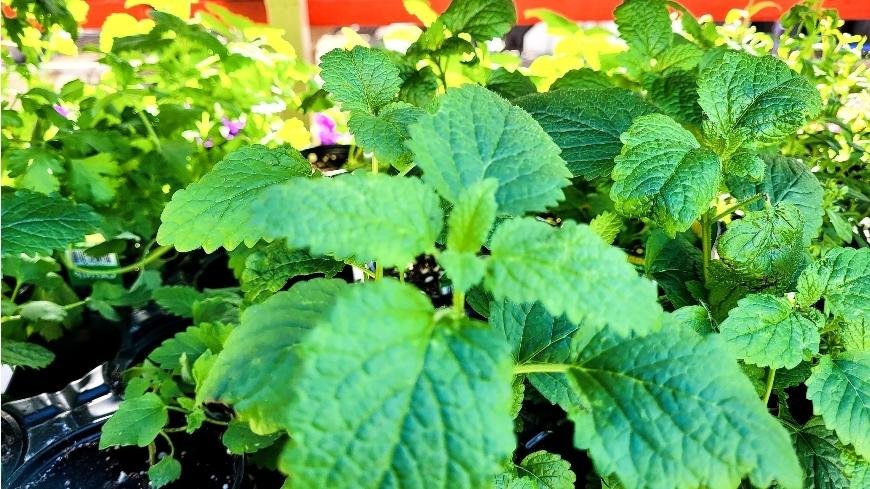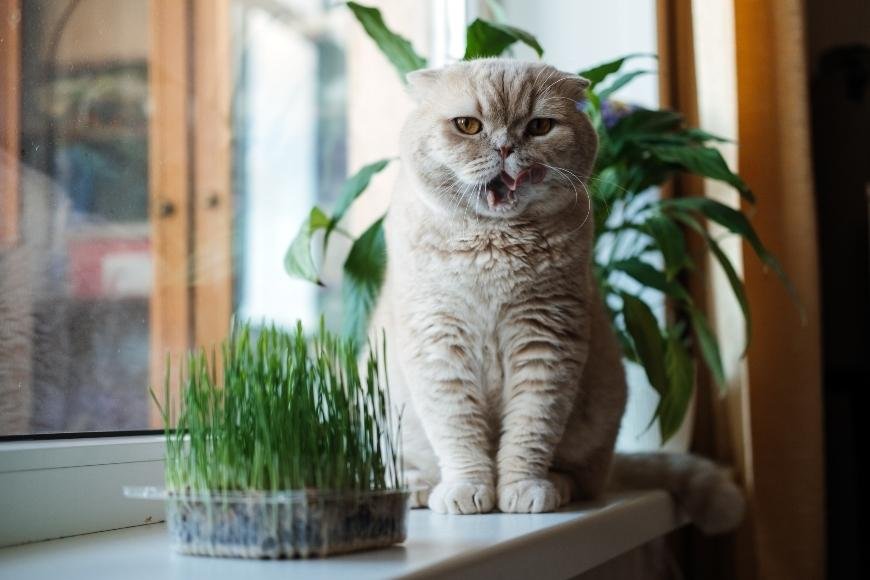How to Use Catnip
Discover How to Use Catnip safely and effectively for both humans and cats with our comprehensive guide on smoking, ingesting, topical application, and more!

When it comes to exploring the world of natural remedies and recreational plants, knowing how to use catnip effectively can open up a whole new experience. Catnip, or Nepeta cataria, is a versatile plant that has been used for centuries due to its various applications.
In this blog post, we will delve into the different methods of using catnip such as smoking and ingesting it. We'll also discuss how to give your cat catnip in order for them to enjoy its effects safely. Furthermore, you'll learn about topical application of catnip and understand why some people may not feel any effects from it at all.
Explore with us the incredible realm of catnip and find out how you can benefit from it!
Table of Contents:
- Overview of Catnip
- Smoking Catnip
- Ingesting Catnip
- How to give your cat Catnip
- Topical Application of Catnip
- FAQs in Relation to How to Use Catnip
- Conclusion
Overview of Catnip

Nepeta cataria, a herb from the mint family that has been used for centuries by both humans and cats, is commonly known as catnip. It contains a chemical compound called nepetalactone which can act as a stimulant when inhaled or ingested by cats. The stimulating effects of catnip on cats tend to be fleeting, typically waning after a period of around 10 minutes.
Smoking catnip, gaining traction among leisure drug users for its slight psychoactive attributes and capacity to grant relaxation and stress abatement, is becoming more fashionable. The effects of smoking catnip are similar to those experienced with marijuana but much milder in intensity. Generally speaking, smoking catnip will cause feelings of euphoria, increased energy levels, enhanced creativity and improved focus while reducing anxiety levels. However, these effects typically only last for around 30 minutes before wearing off completely so frequent use may be necessary if you want to maintain the desired results over time.
Consuming catnip can have varying effects, from relaxation with small amounts to intense psychoactive experiences including hallucinations in some cases when ingested in large doses. Generally, taking in a limited amount (under 1 gram) can cause an atmosphere of tranquility, while larger doses (over 3 grams) may bring about more extreme psychological effects such as distorted perception and even visions. As with any substance there is always potential risk associated with consuming too much so it’s important to start slow when trying out this method for the first time until you know what your body’s tolerance level is like for it specifically
Smoking Catnip
Nepeta cataria, or 'smoking catnip', is a long-used method of providing felines with an added thrill. Catnip has been used for centuries by humans and cats alike, but it’s important to understand the risks before you light up.
Is smoking catnip safe? The answer is yes—but with caution. It’s best not to smoke too much at once or on a regular basis because of potential health risks associated with inhaling any kind of smoke. If you choose to experiment with smoking, be sure the plant matter is fresh and free from any sort of contamination.
When it comes to using catnip in its smoked form, there are two main methods: rolling papers and pipes. Rolling papers are fairly easy to come by; just be sure they’re made from non-toxic materials like rice paper or hemp fiber so that your pet won’t be exposed to any harmful chemicals while smoking their treat. Pipes can also be found online or in some specialty stores; just remember that they should never contain metal parts since these can become very hot when heated up and could potentially burn your kitty's nose if touched directly after being lit.
Catnip inhalation is a widespread method of experiencing the plant's effects, however it can also be taken orally for an intensified effect. Ingesting catnip may provide different results than smoking it, so let's take a look at how you can ingest this herb.
Ingesting Catnip
Ingesting catnip is a popular way to enjoy the effects of this herb. Eating raw or dried leaves is another easy way to consume catnip without needing any special tools - simply chew on some fresh leaves directly off the stem, or grind up dry ones into powder form first then mix into food items like yogurt smoothies etc. This method provides similar effects as those experienced when drinking tea; however, they tend not to last quite as long since digestion takes longer compared with absorption through mucous membranes found inside our mouths and throats when we drink liquids instead. Additionally consuming large amounts could potentially cause stomach upset depending on individual tolerance levels, so start small and work your way up slowly over time if necessary.
Drinking Catnip Tea:
Drinking catnip tea is another popular way to ingest this herb without having to worry about potential health risks associated with smoking it such as lung irritation or tar buildup from combustion products in smoke inhalation - plus there's no need for special equipment either. All you need are some fresh (or dried) leaves from your local garden center/herb store plus hot water - combine these two ingredients together in a teapot and let steep until desired strength then strain out any remaining plant material before enjoying. The flavor profile tends towards being slightly sweet yet earthy at times so feel free to add honey/agave syrup/etc if needed - also don't forget that adding milk & sugar makes this into more of an indulgent treat rather than just medicinal beverage ;)
Although ingesting catnip is not recommended, it can still be used safely and responsibly with the right precautions. Still, with the right measures taken, it is possible to teach your feline friend how to enjoy Catnip in a secure and accountable manner.
How to give your cat Catnip

Catnip, or nepeta cataria, is a member of the mint family and is known for its euphoric effects on cats. It's not just used as an herbal remedy but also as a recreational drug for cats. Catnip can be found in most pet stores or even grown at home if you have a green thumb.
The easiest way to give your cat catnip is by using the dried herb form. You can buy it already dried and crushed up into flakes or purchase the whole leaves that need to be broken down yourself. Simply sprinkle some onto your kitty’s favorite spot such as their scratching post, bedding area, or even directly onto them. The more concentrated areas tend to elicit stronger reactions from felines so don’t forget about those hidden spots behind furniture too. Be sure not to overdo it though; too much could make your furry friend sick so moderation is key here.
If you prefer fresh catnip instead of dried, simply grow some in a pot indoors near sunlight and water regularly until ready for harvest (about 3-4 weeks). Once mature enough pick off several leaves from the stem then crumble them up between fingers before sprinkling onto their desired area(s). This method tends to produce more powerful results due to higher concentrations of essential oils present in freshly picked plants compared with dry herbs. However caution should still be taken when dosing out since cats may become overly excited leading to unwanted behavior like excessive meowing or biting/scratching people/furniture etc…so keep an eye on them while they are enjoying themselves.
Finally, there are other methods available such as buying pre-filled toys filled with catnip which provide hours of fun playtime activities without having any mess around your house afterwards (just remember these only last temporarily). Additionally liquid extracts can also be purchased online if you're looking for something different than traditional forms - however this option might require extra research beforehand since there are varying quality levels available depending on what brand/type you choose. All in all, whatever route chosen always ensure safety first by monitoring closely how much gets administered at once and consider consulting vet advice if necessary prior to trying anything new out with your beloved feline companion.
Time to explore how Catnip can be administered topically - rubbing the herb on fur and skin. This method involves rubbing the herb on your cat’s fur and skin for a stimulating effect.
Topical Application of Catnip
Topical application of catnip is a great way to experience the effects of this plant without having to smoke or ingest it. When applying catnip topically, there are several materials and safety considerations that should be taken into account.
The first step in topical application of catnip is gathering the necessary materials. You will need some type of carrier oil such as coconut, olive, or jojoba oil; dried ground-up catnip leaves; and a container with an airtight lid for storage. To ensure maximum potency, use freshly dried catnip leaves that have been ground up finely using either a mortar and pestle or food processor/coffee grinder.
Once you have your materials gathered, you can begin preparing the topical solution by combining two parts carrier oil with one part ground-up catnip leaves in a bowl or other container large enough to hold all ingredients. Stir until everything is well mixed together then transfer to your storage container with an airtight lid for future use if desired. It’s important to store your topical solution at room temperature away from direct sunlight so that it doesn’t spoil over time.
Before applying topically, it is essential to exercise caution as everyone's individual sensitivities can vary. Therefore, one should always test on a small area first before moving onto larger areas if needed - similar to when trying out any new skincare product. Therefore, it is wise to be conservative when using catnip-derived topical solutions due to the potential for skin irritation from essential oils such as eugenol. Keywords: Caution, Test Area First, Skin Irritation
Finally, don’t forget about proper hygiene practices after each usage – wash hands thoroughly afterwards with soap and water or use hand sanitizer if available nearby before touching anything else around you. This helps reduce potential contamination risks associated with handling natural products such as herbs like Catnip which may contain bacteria due to their growing conditions outdoors where they are exposed more easily than those grown indoors under controlled environments (i.e., greenhouses).
Catnip can be employed in topical applications, like balms and essential oils. Moving on to the different methods of using catnip, we will explore how it is consumed orally or inhaled.
FAQs in Relation to How to Use Catnip
How should cats take catnip?
Catnip can be administered to cats in a variety of ways. The most common method is by sprinkling the dried catnip leaves on their favorite toy or scratching post. This allows them to interact with it and enjoy its effects. An alternative is to put fresh catnip in their chow or drinking water, although it may not be as potent as using dried leaves. For maximum potency, try crushing the leaves before adding them to either option for better absorption of the active compounds found within the plant's essential oils. Lastly, if desired, you can purchase specially designed toys that contain pre-filled pockets of dried catnip which will provide your pet with hours of enjoyment.
How do you use catnip for humans?
Catnip can be used for humans as a natural remedy for anxiety, insomnia and other ailments. Catnip can activate the secretion of serotonin in the brain, which is correlated with sensations of comfort and contentment. Catnip can also help to reduce inflammation, boost immunity and aid digestion. To use catnip for humans it should be taken in small doses either orally or as an infusion such as tea. For best results consult your healthcare provider before taking any herbal supplement including catnip.
Is Doggijuana a catnip?
No, Doggijuana is not a catnip. Catnip (Nepeta cataria) is an herb in the mint family that cats enjoy for its calming effects when ingested or smelled. It contains nepetalactone, which has been shown to have sedative-like effects on cats and other animals. In contrast, Doggijuana consists of dried hemp flowers from cannabis plants bred to produce high levels of CBD, a non-psychoactive compound with potential therapeutic benefits for humans but no psychoactive effect on dogs.
How much catnip do I use?
The amount of catnip to use depends on the desired effect and the individual's tolerance. Start with a minimal amount (1-2 grams) and adjust as necessary to reach the desired effects, taking into account individual tolerance. It is important to note that some people may be more sensitive than others when using catnip, so caution should be taken in order not to overdo it. Additionally, it is best practice to consult with a healthcare professional before taking any new substance or supplement for advice on proper dosage and potential side effects.
Can I give my cat catnip everyday?
It is not advisable to give your cat catnip on a daily basis, as overconsumption may cause digestive problems and behavioural changes. Catnip can be a fun and harmless treat for cats, but if given too frequently it can lead to digestive issues and behavioral changes such as restlessness or aggression. It is wise to restrict the amount of catnip you provide your feline companion in order to avert any possible health hazards. It is advisable to only provide your feline with a limited quantity of catnip no more than twice in any given week.
Conclusion
Catnip is a multifaceted plant with various applications. Smoking, ingesting and topical application are just some of the methods available for use catnip. Each method has its own set of effects, so it's important to understand them before deciding which one is best for you. It is essential to take precautionary measures when utilizing this herb and speak with a healthcare professional if any queries or worries about possible adverse reactions arise.






































































































































